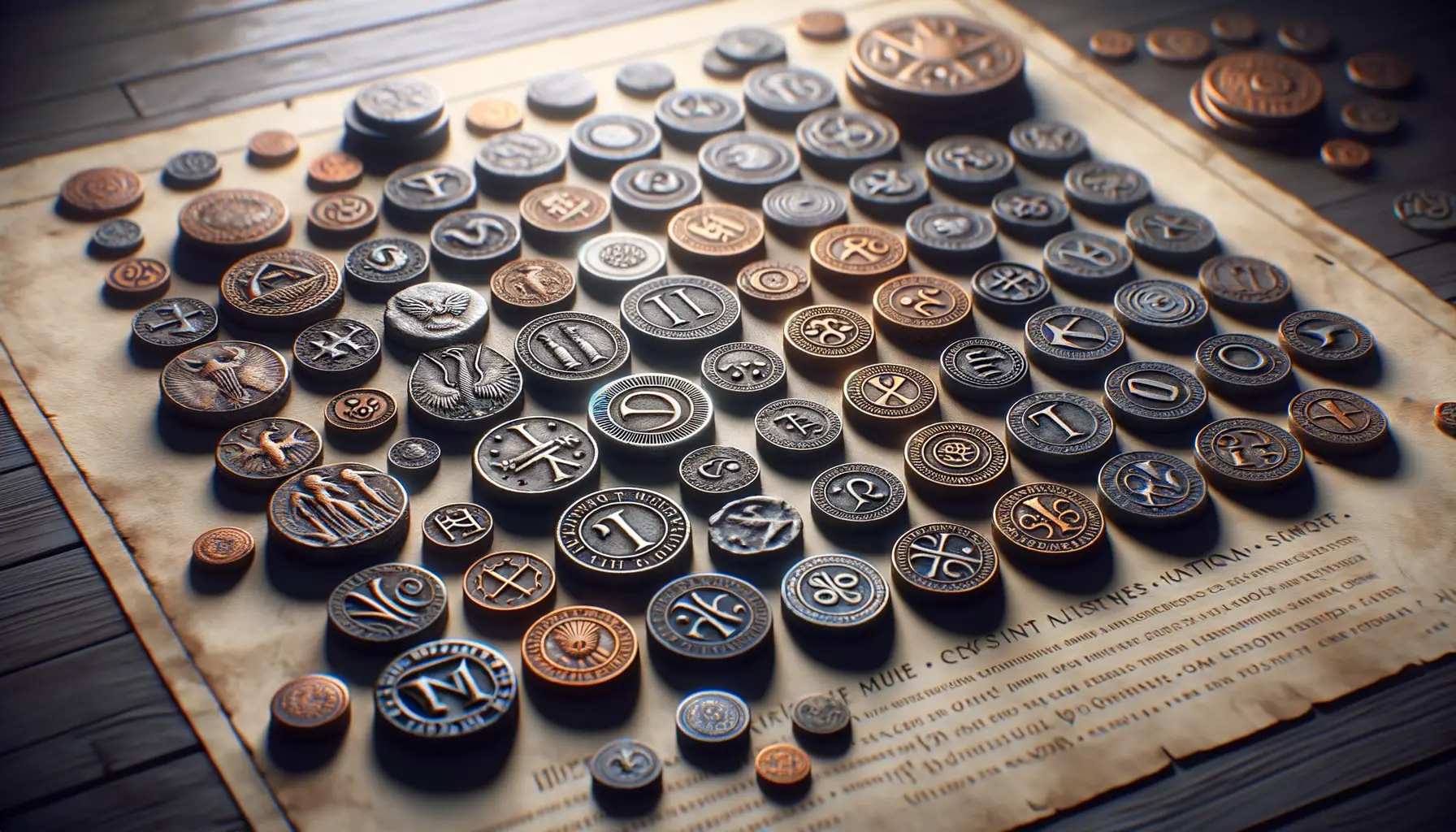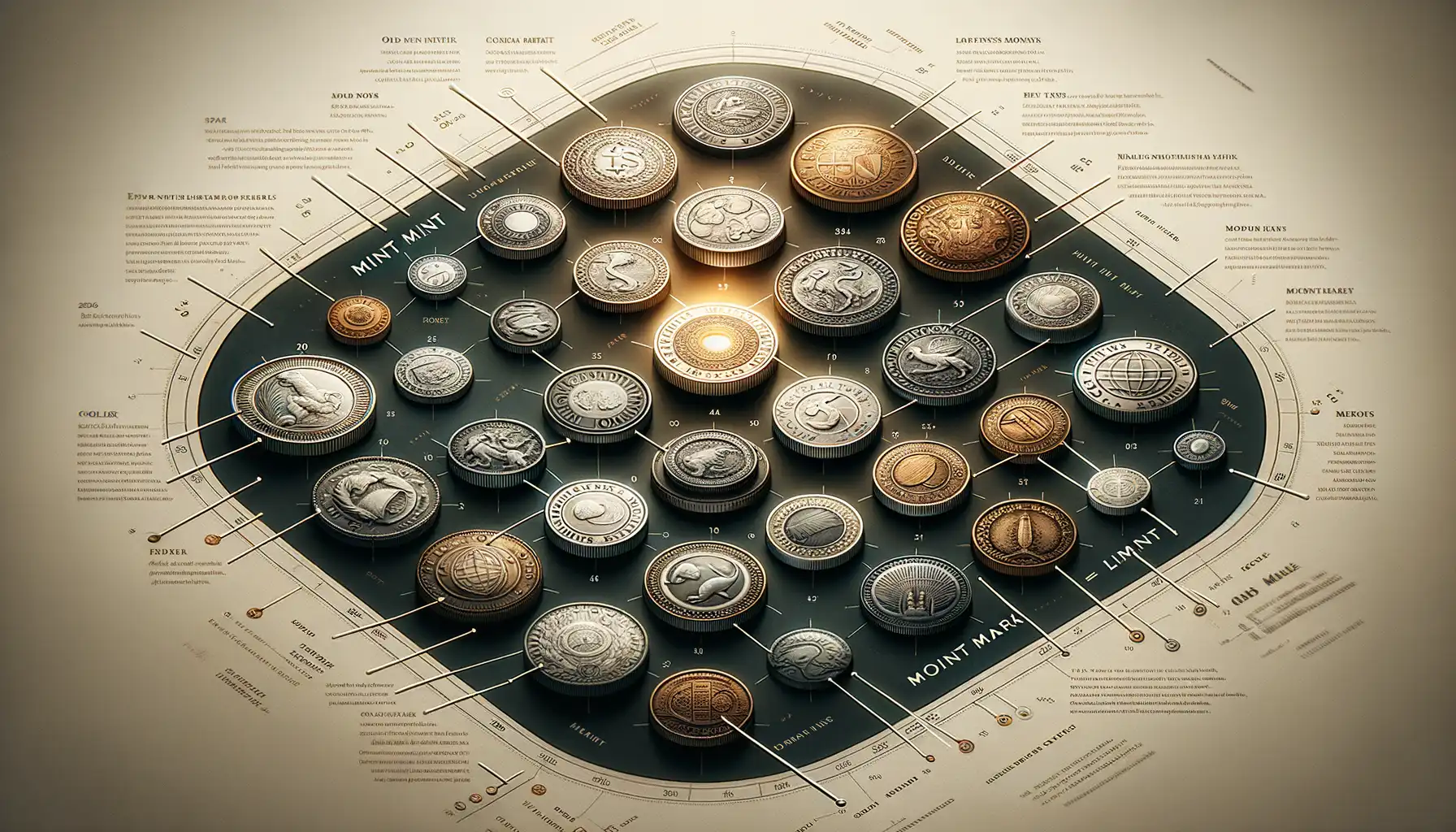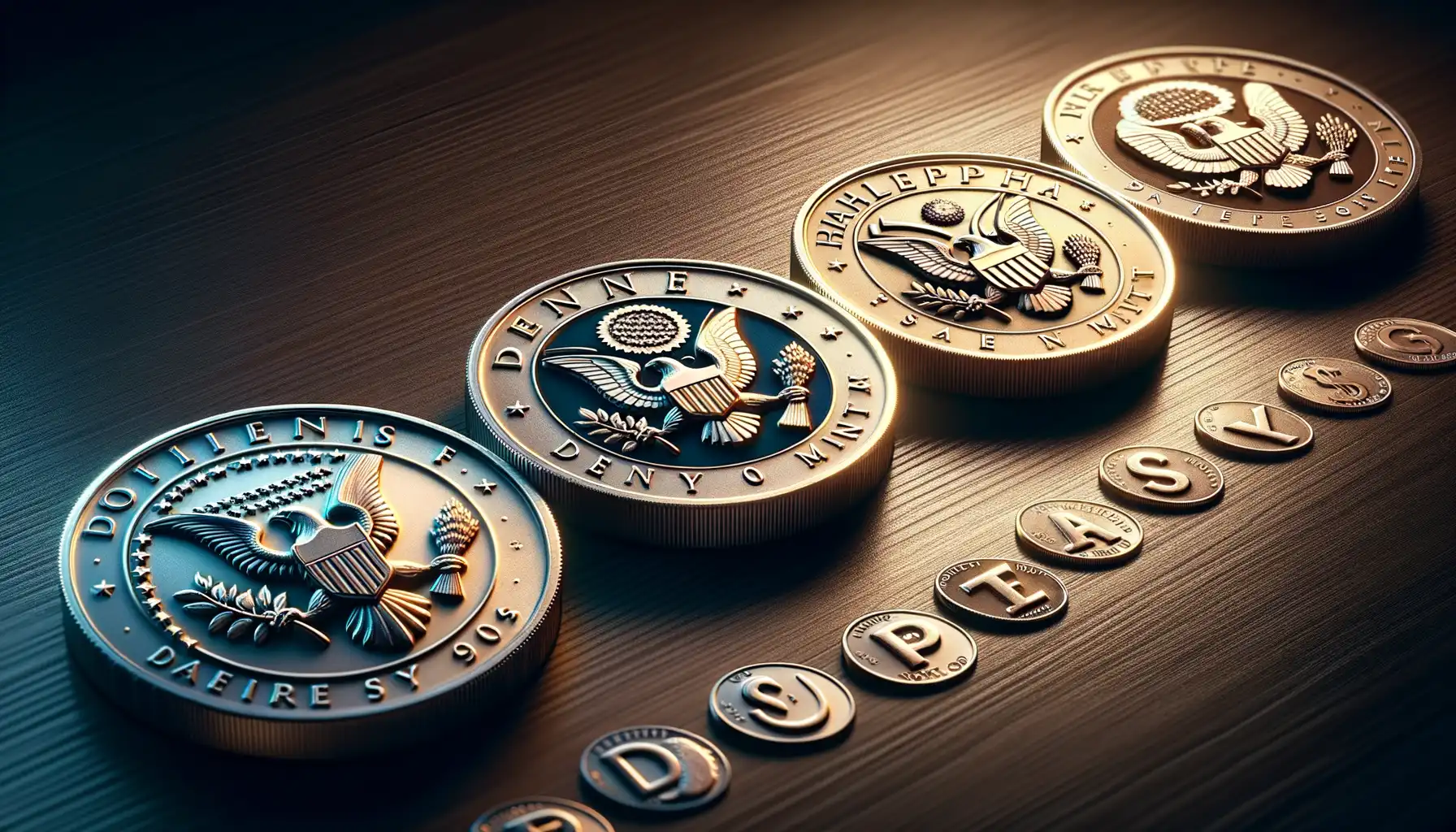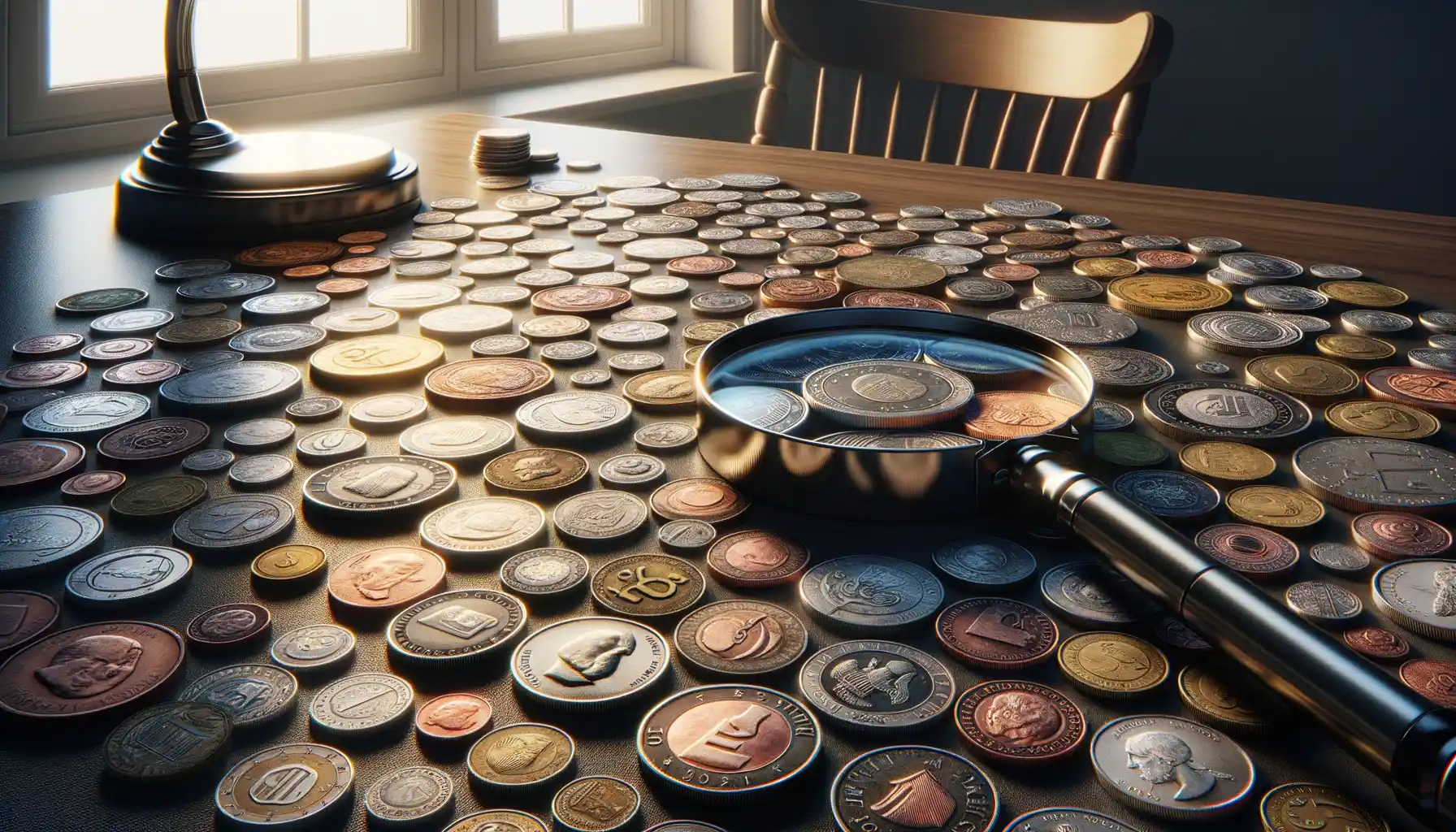What Are Mint Marks and Their Purpose?
Discovering the Hidden Signature of Coins
Coins often have a subtle story tucked away in their design—a tiny detail called the mint mark. This little letter or symbol, just a fraction of an inch wide, reveals where each coin was produced. Think of it like an artist signing their painting; it’s a stamp of origin, a secret clue waiting to be explored.
Mint marks matter more than you might think. Historically, mints needed to track where coins were created for quality control and accountability. Fast-forward to today, and these marks have become a treasure map for coin collectors and enthusiasts. Imagine holding a coin minted in Denver (with its “D” mark) versus one from San Francisco (marked “S”). Each tells a unique chapter of history!
Why Do These Marks Really Matter?
Here are some ways mint marks serve a purpose beyond their tiny frame:
- Tracking origin: They identify the city or facility where the coin was struck. Perfect for pinpointing its journey through time!
- Unveiling rarity: Certain mint marks are tied to low-production coins, making them worth much more in the collector’s market.
A small detail, yes, but these marks pack a big punch for anyone looking closer!
Historical Context of Mint Marks

The Birth of Mint Marks: A Glimpse Into Coin-Making History
Imagine holding a coin from centuries ago, its surfaces worn smooth by countless hands. Hidden in plain sight, a small detail—a tiny letter or symbol—speaks volumes about where and when this piece of history was born. Mint marks are like the fingerprints of coins, tying them to specific mints and unveiling tales of empires, revolutions, and economic shifts.
The story begins in ancient Greece and Rome, where early civilizations used mint marks to track the origins of their coins. Back then, quality control wasn’t just a buzzword—it was crucial for governments to ensure trust among citizens in their currency. As the Roman Empire expanded, mint marks became indispensable for managing multiple mints spread across far-reaching territories.
Fast forward to the 18th and 19th centuries, and mint marks found their way into U.S. coinage. When the Philadelphia Mint couldn’t keep up with demand, smaller regional mints emerged in cities like New Orleans, Denver, and San Francisco. Each new mint left its indelible mark on coins, stamping them as unique products of their time and place.
- “D” for Denver: Symbol of the Wild West’s industrial age.
- “O” for New Orleans: A city steeped in Southern charm and colonial legacy.
- No mint mark? That’s Philadelphia, the birthplace of U.S. coinage itself.
These little letters may seem inconspicuous, but they hold the key to unlocking entire chapters of history. Who knew that such a tiny detail could carry so much weight?
How to Identify Mint Marks on Coins

Spotting the Hidden Gems on Your Coins
Finding a coin’s mint mark is a little like solving a tiny treasure hunt – it’s there, waiting to tell its story, but you have to know where to look. These miniature letters, often no bigger than a grain of rice, reveal which mint produced the coin. But don’t be fooled by their size; they pack a big punch when it comes to a coin’s history and value!
Start with these common places to look:
- Beneath the date: This is one of the most popular locations for mint marks, especially on U.S. coins like quarters, dimes, and half-dollars.
- Next to the portrait: Coins like the Lincoln penny often tuck their letter to the right or left of the featured profile.
- The reverse side: Some coins, like older dollar pieces, hide their mint mark near the eagle or other design elements on the back.
Still can’t spot it? Don’t worry! Sometimes, a magnifying glass or angled lighting helps – those hardworking engravers didn’t always make it easy for us. And if your coin lacks a mint mark completely, that might be a clue too – some coins were only minted in one place, so no mark was necessary. Every coin has its quirks, and that’s part of the magic!
Impact of Mint Marks on Coin Value

Why Mint Marks Can Skyrocket a Coin’s Worth
Imagine holding a coin that feels unassuming at first glance—until you spot a tiny letter stamped on it. That little detail, my friend, could be the difference between a common pocket change find and a treasure worth thousands. Mint marks, those understated symbols of origin, can dramatically amplify a coin’s value.
Here’s why: coins struck at certain mints—especially ones with limited production or a brief history—tend to be rarer, and rarity often spells demand for collectors. Take, for example, the 1909-S VDB Lincoln penny: the “S” mint mark signifies it was produced in San Francisco. It’s one of the most coveted coins in American numismatics, fetching jaw-dropping prices at auctions.
Factors That Make a Mint Mark Valuable
It’s not just about geography—it’s also about context. Here are key factors that elevate a coin from ordinary to extraordinary:
- Low mintage: Coins from mints with smaller production runs are usually harder to find.
- Defunct mints: Marks from now-closed locations like Carson City (“CC”) heighten intrigue and scarcity.
- Errors: Imperfections on mint-marked coins drive collectors wild!
So next time you examine your collection, pay attention to those tiny letters—they may hold the secret to a hidden fortune!
Collecting Coins Based on Mint Marks

Why Mint Marks are Treasure Maps for Collectors
For many coin enthusiasts, mint marks aren’t just tiny letters—they’re secret codes that open a window into history. These small engravings reveal where a coin was born: the bustling U.S. Mint in Philadelphia, the storied halls of San Francisco, or the now-closed Denver and Carson City operations. Each mint has its own tale, and collecting coins based on their mint marks feels like piecing together a thrilling jigsaw puzzle of America’s past.
Imagine holding two seemingly identical coins in your hand—same design, same year. But one has a tiny “S” (San Francisco) etched near the date, while the other flaunts a bold “D” (Denver). Suddenly, you’re not just holding coins; you’re holding clues from different parts of the country!
- Carson City: Known for striking coins during the Nevada silver rush—highly sought after and rare.
- New Orleans: Coins from this mint carry a distinctive charm tied to the city’s vibrant history.
Collectors delight in how these marks create variety and rarity. Whether it’s unearthing scarce mintages or completing a ‘mint set’ of all facilities, mint marks keep the hunt thrilling for every numismatist.
The Joy of Chasing Rare Mint Marks
The thrill lies in the search. A penny with no mint mark? It could hail from Philadelphia, which traditionally left its coins unmarked. A coin with the “CC”? Jackpot—coins from Carson City are cherished gems due to their limited production. Even newer collectors can start small by targeting coins from lesser-known mints or experimenting with eras when minting practices shifted.
Think of mint-mark collecting like building a time machine. Your mission: to track down those hidden “P,” “D,” “S,” or elusive “CC” marks and unlock their story. Plus, as you dig deeper, you’ll uncover variants—the subtle differences in marks that make certain pieces worth thousands. The chase is always surprising, rewarding, and full of stories waiting to be told.